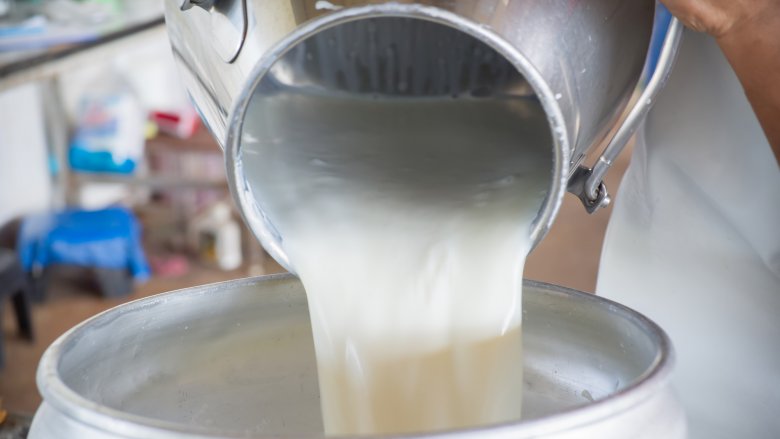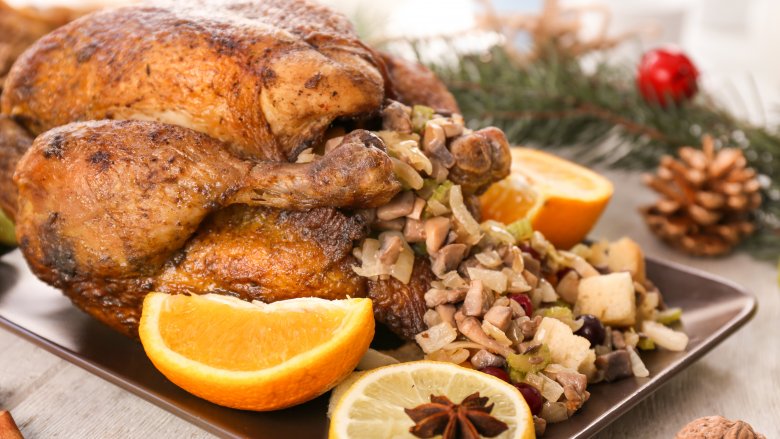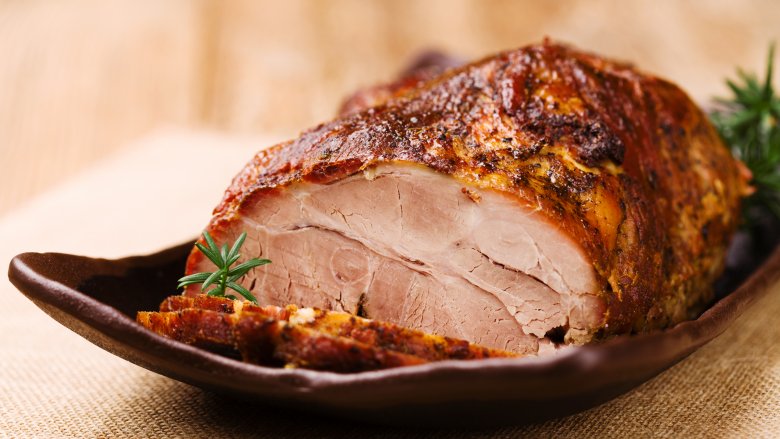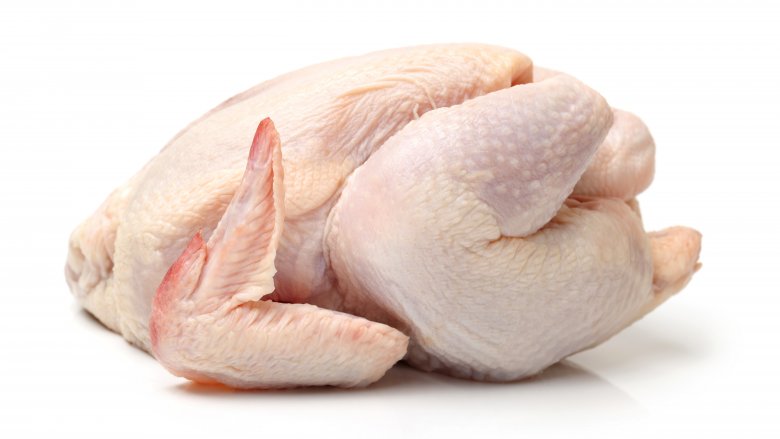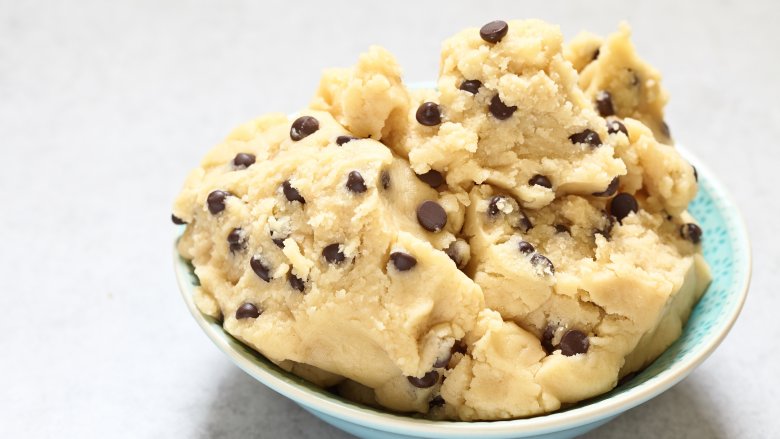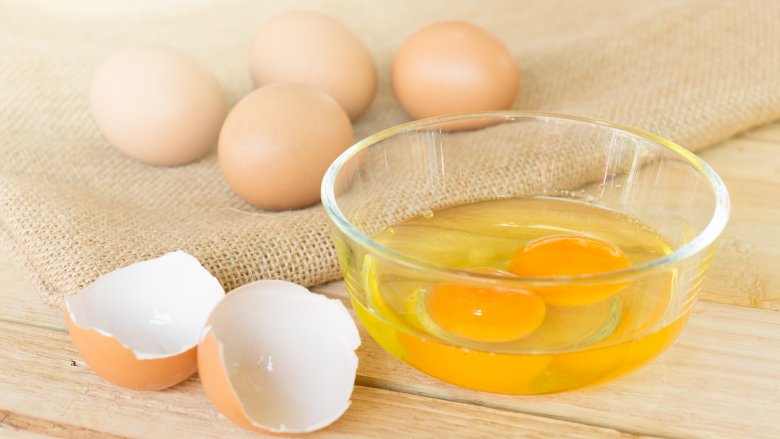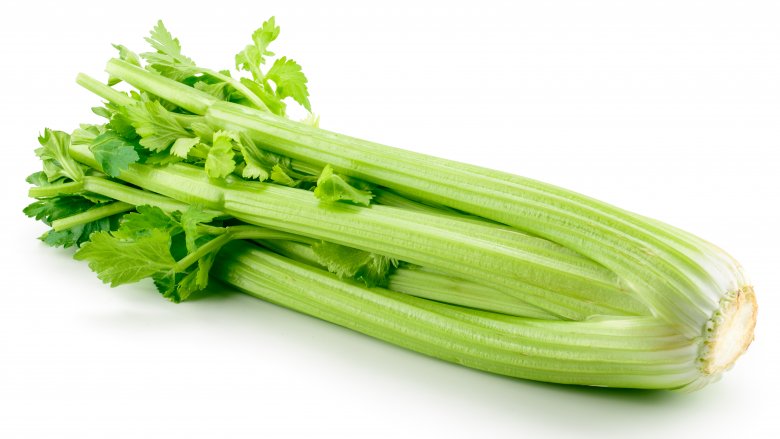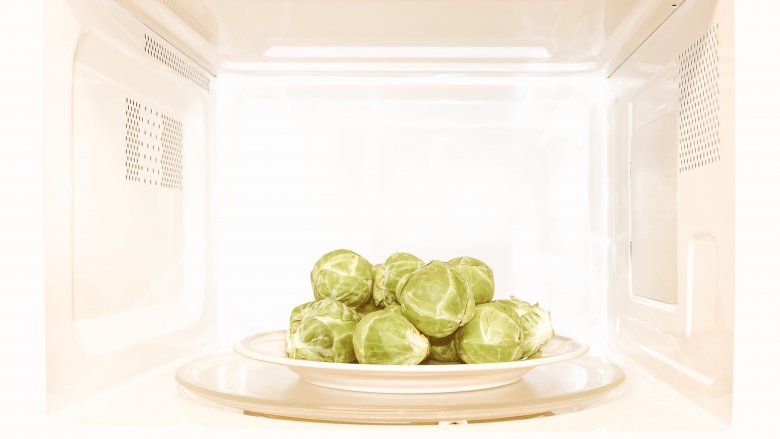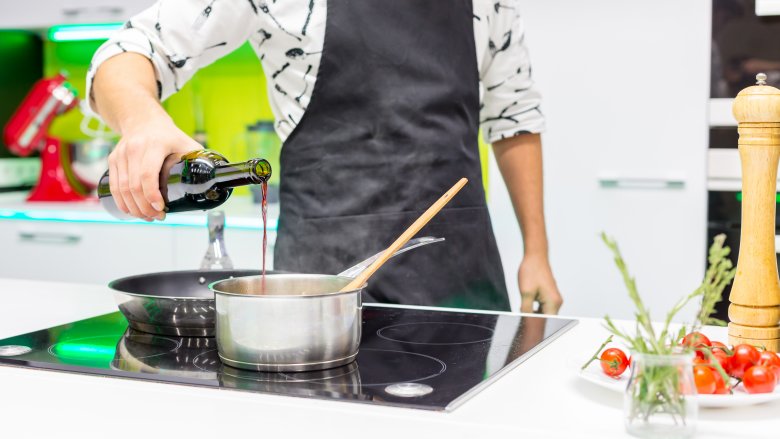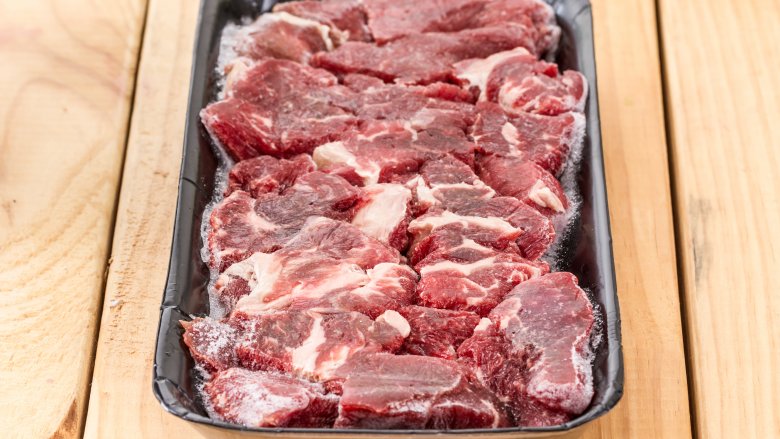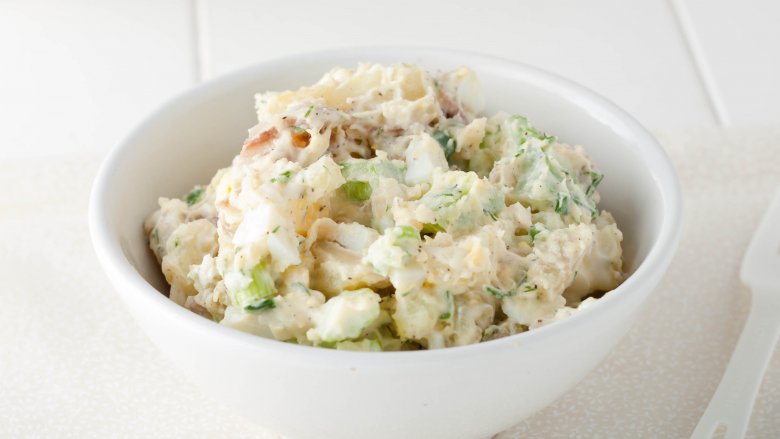Things People Believed About Food 50 Years Ago That Ended Up Being Wrong
When it comes to food safety and preparation, a lot has changed in the last several decades. Though you may not remember defrosting meat on the counter all day, your parents probably do, and unsurprisingly, that is not the recommended meat defrosting technique today.
Now, some might argue that these guidelines have changed for the better, while some would say they've changed for the worse. Better, for example, is that pork cooked today versus cooked pork in the days of yore is a vastly different animal. Today the guidelines say tender and pink; decades ago it was tough and gray. Tender and pink tastes better, for those of us keeping score. But then there are those things that we almost wish we didn't know, like how eating raw cookie dough really can be hazardous to our health, and not just because of the eggs. You may be surprised to learn that a common pantry ingredient is actually the bigger culprit.
Although some of these busted myths and false truths from the old days might be inconvenient, they're likely keeping you healthier. Here are some of the things that people believed about food 50 years ago that are just not true today.
Raw milk was good for you
Though we do eat plenty of foods in their raw form, milk should not be one of them. The risks of consuming raw milk, or milk that has not been pasteurized, outweigh any potential benefits you might get from it, since along with any "good" bacteria you might be seeking to obtain comes other harmful bacteria. Germs like E. coli, salmonella, campylobacter, and listeria that live in raw milk can cause infections with symptoms that range from vomiting and diarrhea to far more serious life-threatening diseases.
Because raw milk can be potentially dangerous to so many people, particularly children, older adults, and those with compromised immune systems, it has even been banned for sale in 30 states. So while milk might do a body good, raw milk might not.
Stuffing a turkey was standard practice
Everyone remembers Grandma's turkey fondly, unless you were one of the unlucky ones to get sick from the bacteria-laden stuffing inside. That's right — as wise as Grandma was, she really shouldn't have been cramming all that bread into her turkey.
We know now that the required temperature to kill any harmful bacteria lurking deep in that cavity is 165 degrees. "But I cook my turkey to 165 degrees, so that's no problem," you might be saying. But just because your meat reaches that temperature doesn't mean that the middle of the stuffing has. To be safe, it's best to bake your stuffing in a separate dish outside of the turkey. If you absolutely must stuff your bird, be sure the bread is moist, that you stuff it loosely, and to get the turkey into the oven immediately after stuffing.
Pork needed to be cooked to death
Poor Grandma — her food is under attack again, and this time it's pork. But the shoe leather that resulted from the 160 degree recommended safe cooking temperature wasn't necessarily her fault.
Decades ago, the parasite trichinella spiralis, which can cause trichinosis in humans (an infection caused by roundworm), was prevalent in pork. Today however, because of the decline in the parasite's presence in the meat, the cooking guidelines have thankfully been revised and we are able to enjoy tender, moist pork cooked to 145 degrees. And if you've had tough, overcooked pork, you know those 15 degrees make all the difference.
Washing raw poultry was necessary
This debate has raged on for decades, but the evidence shows strongly in favor of NOT washing poultry.
The idea behind washing your raw chicken and turkey is to rinse off any bacteria that might be present. However, in doing so, you're actually spreading all that bacteria around your kitchen. Think of that contaminated water splashing in your sink, on your counters, into your dishes, and onto your towels — is that where you want all those germs?
The good news is that to kill that nasty bacteria, all you need to do is... wait for it... cook it! This successfully avoids any cross contamination in your kitchen and keeps everyone safe.
Eggs were the problem in raw cookie dough
Raw cookie dough — most of us cannot resist the temptation to lick the spoon, the bowl, and probably also sneak a not-so-small scoopful. But while we've always been told that this is bad practice due to the presence of raw egg, it turns out the egg is not your biggest problem.
With the pasteurized eggs we're able to get today, the risk of getting sick from raw egg has diminished. So what are we looking out for now? Surprisingly, it's the flour. New research has shown that E. coli can survive in a dry environment (like your flour canister), and turn your blissful baking experience into a foodborne illness nightmare. Like it or not, waiting for the finished product to come out of the oven is still your best bet — just not for the reason you always thought.
Egg yolks were a cholesterol nightmare
It has long been believed that egg yolks caused high cholesterol. Egg substitutes popped up, egg white omelets fell into favor, and all those poor egg yolks went down the drain. But there's good news for everyone who's been missing that creamy, yellow goodness: The experts say you can enjoy those yolks again. Eating foods that are high in cholesterol, like egg yolks, does not negatively impact the blood cholesterol of a healthy person. In fact, studies show you can eat an egg a day without increasing your risk of heart disease. And that means Sunday brunch just got more delicious.
Negative calorie foods existed
Negative calorie foods — the idea that one can eat unlimited quantities of certain foods because you're actually burning more calories consuming them than they contain. You know that old saying, "if it seems too good to be true, it probably is"? Well...
Unfortunately for all those hopeful dieters, these foods don't actually exist. The so-called negative calorie snacks like celery and other low-calorie produce do in fact contain calories, and the difference between caloric value and consumption still puts you in the "plus" column. On the upside, at least you're getting your daily recommended dose of fiber from all that celery.
Microwaving food caused a loss of nutrients
For all its convenience, the microwave was once thought to zap away precious nutrients from your broccoli and Brussels sprouts. The truth is that microwaving vegetables is one of the best ways to retain all those vitamins.
We know that boiling veggies causes a loss of nutrients as they're lost in the water they're being cooked in. But in microwaving, because of the short cooking time and meager use of water, these previously lost nutrients remain. Because, hey, if you're going to eat broccoli, you might as well get peak nutritional value, right?
Alcohol burned off completely in cooking
How many times have we heard that all the alcohol burns off during the cooking and/or baking process? Turns out you might want to grab that boozy cupcake away from your kid, quick!
Studies show that depending on the cooking method, temperature, and time cooked, as much as 45 percent of the alcohol can remain in a dish that is simmered or baked. Something to keep in mind the next time you're reassuring your guests that your coq au vin is alcohol-free.
Thawing meat on the counter posed no risk
Once upon a time, leaving meat on the counter to defrost all day was standard practice. You needed that beef roast ready when you got home from work — what else were you supposed to do?
Two safer options include planning ahead and defrosting in the refrigerator, or defrosting in cold water. The reason being is that bacteria quickly multiplies at room temperature, and while the outer layer of your meat defrosts and comes to room temperature, any bacteria on that surface will start growing faster. By the time your entire roast is defrosted, you've potentially got a whole bacteria colony on your counter.
Mayo-laden salads could sit out all day
It's the middle of summer, you're at a barbecue, the buffet table is squarely in the sun, and the potato salad has been sitting out all day. A word of advice: RUN! Just because it's been happening for years doesn't make it right.
Today's guidelines say that perishable foods that require refrigeration should not be left out for more than two hours. And that window goes down to just one hour if the air temperature is 90 degrees or more. That means if you can't get to the macaroni salad fast, stick to the chips.
